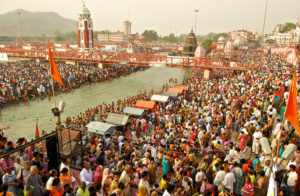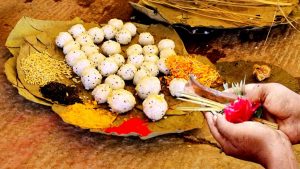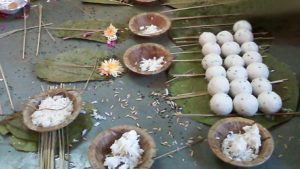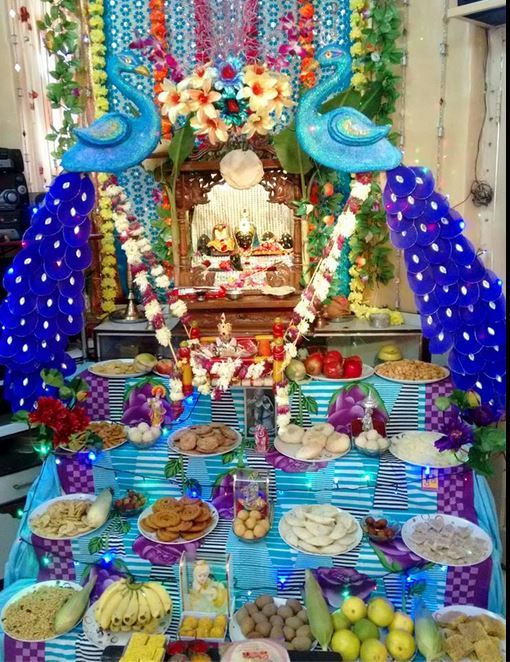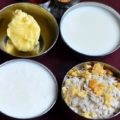Krishna Jayanthi – Celebrations, Rituals and Significance
In the previous post we had seen the prerequisites to celebrate Krishna Jayanthi, in this post we will see about how it is celebrated its rituals and significance.
Literal meaning
Jayanti means birth, Krishna Jayanti refers to the birthday of Shri Krishna. Janmashtami is a composite of Janma, which means birth, and ashtami, the eighth tithi.
Date
Krishna Jayanti occurs in the month Shravana or Aavani, Krishna Paksha, Ashtami— the eighth day after the full moon (after Aavani Avittam). Some celebrate it in the month Shravana or Aavani when the Rohini nakshatra rises with the moon. This is sometime between August and September according to the Gregorian calendar.
Celebration rationale
Krishna, the avatar of Vishnu, lived during the Dwapara Yuga; his death ushered in the Kali Yuga. Krishna was the Yadava raja, the King of the Yadava race. He was born to slay his uncle Kamsa and offer spiritual guidance to humans. The Bhagavad Gita is a condensed philosophy of life that Krishna taught Arjuna, the Pandava prince. This treatise is a mainstay of Hindu faith.
Unlike most other Hindu festivals, Krishna Jayanti is celebrated at night, and logically so because Krishna was supposed to have been born at night. People usually stay up until the pooja is performed at night. They remember and recount Krishna’s life, celebrating the joyful moments of his youth in Brindavan, his passionate love for Radha, his playful antics and his teachings through song, parayana, or recitation and dance.
Family traditions dictate the observance of Krishna Janmashtami pooja. Some celebrate it during the Ashtami tithi, and others after the ascension of the Rohini nakshatra or star after moonrise. In general, the Tamizh people celebrate Krishna Jayanti on the Ashtami tithi and Kannadigas celebrate it on Rohini nakshatra.
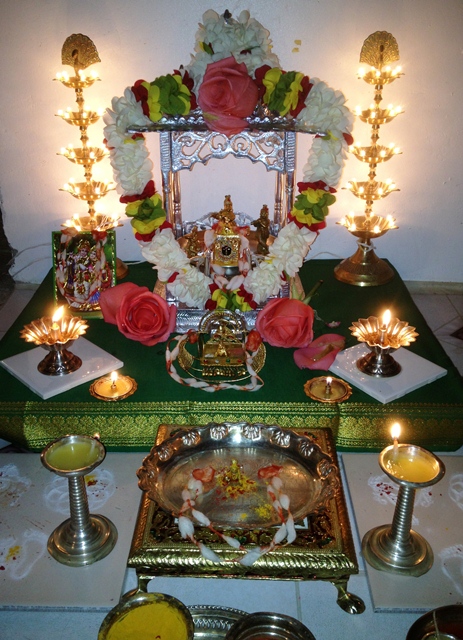
Significance of the neivedya
Krishna was a child who loved milk, buttermilk, butter, sweets, yoghurt and beaten rice. He was brought up in a cowherd’s family and therefore grew up loving dairy products. Since he was a particularly willful child but extremely endearing, he was indulged by everyone despite his notoriety for pranks. People usually remember this and indulge all the children in the house with wonderful things to eat. The list is endless.
The neivedya includes murukku, salt seedai jaggery seedai, vadai, pal payasam, aval, jaggery, butter, milk, curd, banana, guava, black berry (naval pazham), wood apple, country apple, grapes and other fruits, fried sweets and savouries.
Associated legends
The birth and life of Shri Krishna.
Associated events
Bhajans, temple visits and dancing.
Walkthrough
Prepare, get organised and set up the house.
Krishna Jayanti is always celebrated at night. The morning is devoted to preparation and simple fasting and the night is devoted to joyous celebration of Shri Krishna’s birth. One should stay up all night (the night of the Ashtami tithi or the night the Rohini nakshatra rises with the moon) and perform the pooja at midnight, as Krishna was born at midnight.
- After morning ablutions, rinse your hair with water, snaanam; make a simple neivedya for the morning like payasam and vadai.
- Prepare a number of tasty eatables that Krishna reputedly loved for the evening neivedya. This is time consuming, so plan ahead.
- Most elders and ardent devotees fast (upavasa) all day or they eat a palaharam.
Observance: Things to Do
- In the evening, after another shower, snaanam, draw Krishna’s feet in different ways. To draw Krishna’s feet:
Make the white wet kolam paste.
Put the paste in a shallow plate.
Make a fist and dip the bottom of your fist in the paste (thumb end up).
Press gently on the floor, leaving a footprint-like mark. (or make a baby walk like in the pic)
- Initiates should perform the sandhyavandanam.
- Decorate the pooja mandapa
Some people have mandapas with hooks from which they hang beautiful garlands of strung fruit, dried fruit and sweets. They perform the Janmashtami pooja with elaborate preparation and great joy. Some families who are particularly fond of celebrating Krishna Jayanti hang pots of yoghurt, a favorite of baby Krishna’s, others decorate a mandapa with lotuses and place a kumbha pot on a lotus, or keep the kol, the dancing sticks, also in the pooja.
- Place an idol or image of Krishna, preferably of baby Krishna. Do use all idols and images you have for this occasion.
- Anoint idols or images of Krishna with turmeric, sandalwood paste and Kunkuma.
- Adorn the Krishna with garlands of tulasi and flowers.
- Set the neivedya along with a plate of betel leaf, betel nuts, unbroken coconut and fruits on a kolam in front of the pooja.
The pooja
The time prescribed to observe the Krishna Janmashtami Pooja or Gokulashtami Pooja depends on the system that your family or community traditions follow. This is either:
- when the Ashtami tithi starts or
- after the ascension of the Rohini nakshatra or star after moonrise.
The system that you choose to follow is entirely a matter of convenience tradition and belief. The some celebrate on Ashtami (based on the tithi) and the some people celebrate on the Rohini nakshatra; therefore, the two are staggered and seldom coincide.
Krishna was born at midnight, and people sing or pray till midnight. They sometimes stay up playing the Kol-attam, a dance with sticks similar to Gujarati dandiya. Others keep awake listening to the Bhagavatam, the Krishna Lila or other stories depicting the greatness or playfulness of Lord Krishna as a child. Many visit the temple in the evening and fast until the neivedya is completed and break the fast by eating the prasaadam of sweets and other delectable offerings.
The next day:
Punah pooja—perform a small pooja with a neivedya.
Variations in tradition
Often, for convenience, people perform the pooja after sunset and go to bed early. In Maharashtra, people hang butter and yoghurt in earthen pots from the ceiling or some high hook and young boys compete to break the pots for the prasad, much like a pinata.
In Karnataka, some families perform the Vishnu sahasranaama abhishekam for Krishna with the neivedya and karpura aarati. They place a lime and a coin in the palm of the right hand, chant a mantra, put some water and then milk on it and offer it to the deity. Young children are often dressed up like little Krishna, with a ponytail on the side and a peacock feather.
Reach us to be a part of our whatsapp spiritual reminder group
